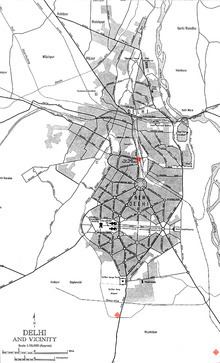Target Two markets and a bus Total number of deaths 62 | Non-fatal injuries 210 Start date October 29, 2005 Attack type Bomb | |
 | ||
Similar Rafiganj train wreck, Jaipur bombings, 2002 Kaluchak massacre, 2008 Assam bombings, 2007 Uttar Pradesh bombings | ||
The 29 October 2005 Delhi bombings occurred on 29 October 2005 in Delhi, India, killing 62 people and injuring at least 210 others in three explosions. The bombings came only two days before the important festival of Diwali, which is celebrated by Hindus, Sikhs, and Jains. The bombs were triggered in two markets in central and south Delhi and in a bus in the Govindpuri area in the south of the city. Indian investigators believe the Kashmir separatist/ Islamic terrorist group Lashkar-e-Taiba was behind the attacks.
Contents
- Timeline
- Modus operandi and suspects
- Suspects
- Casualties
- Rescue and relief operations
- Reactions
- Bomb hoaxes
- World reaction
- References
President A P J Abdul Kalam condemned the blasts in Delhi and sent condolences to the bereaved and other victims. Kalam appealed to the people "to maintain calm and help the agencies in relief and rescue work." Parts of India were moved to higher alert following the blasts.
Timeline
The blasts happened as follows:
(*Note:IST stands for Indian Standard Time, which is equal to UTC+5.5)
Modus operandi and suspects
Suspects
The Pakistan-based Islamist terrorist organisation, the Islamic Revolutionary Front or Islamic Inquilab Mahaz, claimed responsibility for the Delhi terrorist attacks. The Mahaz has previous history of terrorism – It was one of the organisations involved in terrorist attacks in the south Pakistan city of Karachi against French, American and other citizens.
The Delhi Police released three sketches of one of the suspected bombers involved in the bombings. According to NDTV, ten suspects have been detained following the blasts. Five of them were picked up from the Delhi Railway station and others from other railway stations and bus terminals.
Tariq Ahmad Dar, was arrested in Kashmir, as the alleged suspect of the attacks on 10 November 2005. The police also arrested the suspected Govindpuri bomber, Mohammed Rafiq Shah.
Casualties
Thirty eight people were declared dead in Safdarjang hospital, ten in Lady Hardinge Hospital, five in Ram Manohar Lohia hospital and two in AIIMS. The number of fatalities later rose to 62, with about 210 injured.
Rescue and relief operations
Relatives of the dead and injured received money and medical help from the government:
Reactions
Delhi police ordered all temples and restaurants in Delhi closed shortly after the explosions, and the city of Delhi went on red alert.
Bomb hoaxes
At least two phone calls reporting fake bombs have been received by the Delhi police, including a false report of a bomb in a school (or a fair) for people with visual disabilities. In addition, there was a phone call reporting a (purportedly fake) bomb near a bank in Khari Baoli before the attacks occurred; the object referred to by the call was a suitcase, in which there were documents, batteries, and wires. In the midst of the attacks, there was another hoax call reporting a bomb going off in the Gole Market.
The Delhi police, after the explosions, sent out messages to the public asking them to report unidentified objects. This led to a wave of reports of "bombs", all of which proved to be either nonexistent or more benign objects, including a "bomb" at the Som Bazaar in eastern Delhi and another "bomb" near the Sanjay Gandhi Hospital.
World reaction
The bombings have provoked strong international condemnation from the United States, Britain, Pakistan, Canada, Australia, China, Sri Lanka, Japan, Belgium, Brazil, Iran, UAE, European Union, Bangladesh, Maldives, and South Africa.
